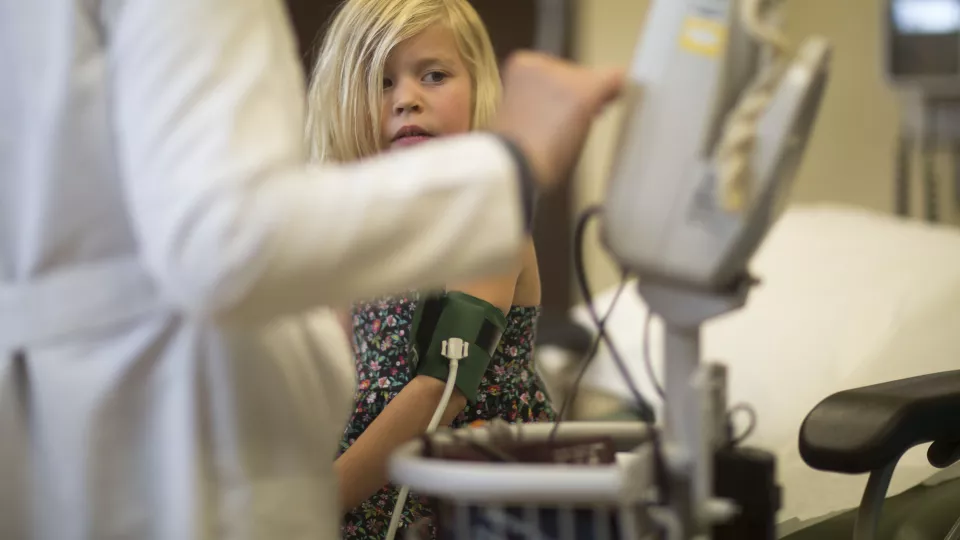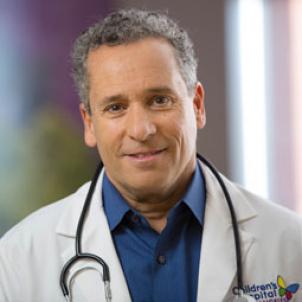
Preventing and Recognizing Blood Clots

When you hear the condition “blood clot,” your mind may not immediately think of your child being at risk. But Guy Young, MD, Director of the Hemostasis and Thrombosis Center at Children’s Hospital Los Angeles, says he’s seen a recent uptick of patients suffering from blood clots.
“Our team treats roughly four new pediatric patients with blood clots each week,” says Dr. Young. “That’s about 200 new patients per year, which is more than it has been in the past.”
And while most patients are those with acute or chronic illnesses like cancer, Dr. Young says they aren’t the only children at risk. Here, he shares more about blood clots, and offers suggestions for how parents can spot a potential blood clot in their children.
A Rare Yet Risky “Plumbing Problem”
The primary function of veins is to transport blood from the body back to the heart and lungs for reoxygenation. But when one of those veins is blocked, blood cannot flow back to the heart.
“Blood clots in the veins are a plumbing problem, comparable to a water backup in a kitchen sink,” says Dr. Young. “And when blood cannot flow properly back to the heart, it causes swelling and pressure behind the clot.”
In children, that swelling and pressure most often appears in the arms or legs, whereas in adults, a clot predominantly appears in the legs.
The most serious issue about blood clots, says Dr. Young, is that “they can travel into the lung and cause an embolism.”
A pulmonary embolism is the sudden block of blood flow from the heart to the lungs. In the case of blood clots in veins, some can result in a pulmonary embolism.
“Pulmonary embolism is a life-threatening, emergency situation,” says Dr. Young. “So, you want to catch a blood clot before it gets to this point.”
How to Spot a Clot
Because the most common symptoms of a blood clot are swelling or pressure in an arm or leg, “Asymmetric swelling is the typical symptom,” says Dr. Young. “And it’s usually pretty obvious since one leg or arm becomes bigger than the other.”
However, some patients report feeling heaviness, pain or cramping in the affected area.
If your child is experiencing these symptoms, Dr. Young says to visit your local emergency room immediately and mention blood clots. He also recommends alerting your child’s physician as soon as possible, so they can begin the referral process to a hematology expert.
Is Your Child At Risk?
Most children at risk for blood clots are those with acute or chronic illness, such as cancer. That’s because they are often treated using central lines or catheters, which are placed in the blood vessels and can disrupt the flow of blood.
“It’s important for parents of these patients to understand the risks associated with catheters and central lines,” says Dr. Young. “Although the risk is relatively low, and the benefits of having a central line often outweighs the risks, it’s still an important discussion to have with your child’s medical team.”
According to Dr. Young, roughly 10 percent of previously healthy patients develop a blood clot from a traumatic injury, such as a sports injury or car accident. Additional risk factors for an otherwise healthy child are repetitive motion injuries, the use of birth control pills, obesity, smoking and in some rare cases, genetics.
“Repetitive motion injuries are most often seen in athletes like a baseball pitcher or volleyball player who regularly spikes the ball,” says Dr. Young. “The risk is low but repeat use of a single muscle group can increase a child’s risk.”
Blood clots are the most serious side effect associated with the use of birth control pills, increasing a female’s chance of developing them by three to four times. In young patients, birth control pills are often used for medicinal purposes such as relief from menstrual pain or heavy periods.
“Again, the risk is low, but if your daughter is taking birth control pills, you need to first have a discussion with their physician about risk,” says Dr. Young.
Obesity and smoking can also lead to increased risk of a clot. “Both smoking and obesity increase the risk in different way,” says Dr. Young.
How to Treat a Blood Clot
In most cases, patients suffering from a blood clot are treated with blood thinners, also known as anticoagulation medications, which prevent the body’s ability to make clots. These medications can also prevent a clot from growing and breaking off into an embolism.
“In extreme cases, there are clot-dissolving medications,” says Dr. Young. “And in especially dire situations, these can be given intravenously under close medical supervision.”
Like with all medications, these anticoagulation medications can come with their own risks.
“Bleeding is the main side effect of these medications,” says Dr. Young. “But the risk of bleeding is very low and overall, these medications are quite safe for children.”
Whether your child has an acute or chronic illness, or is in overall good health, Dr. Young encourages parents to keep the symptoms and risk factors of blood clots in mind.
“Knowing about sudden, asymmetric swelling could be is a lifesaving tool,” says Dr. Young.


